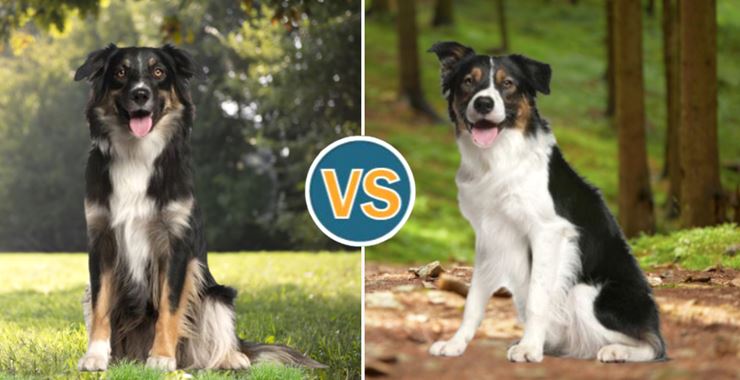
MCNAB VS. ENGLISH SHEPHERD: CAN YOU TELL THEM APART
In the last breed comparison blog, we discussed the Rhodesian Ridgeback vs. the Vizsla. This time, we will consider the similarities and differences between the McNab and the English Shepherd. Let’s take a look!
A Brief History of the McNab
Scotsman Alexander McNab moved from Scotland to Mendocino County, California, in 1866. As an experienced shepherd, he became dissatisfied with the dogs available to work sheep in the way that he needed. In 1885, he returned to California from Scotland with two Scotch Collies, and these two dogs, which were excellent at heading and herding, were bred to local dogs of Basque Spanish and English origin to produce offspring that excelled in sheep work and were capable of heading, heeling, and driving.
McNab continued to fine-tune his dogs, adding more influence from the Scottish dogs he imported over the years. The McNab dogs became well-known throughout Northern California and eventually made their way outward. Today, they have a strong following in the sheep-herding world and are known to excel in dog events and other activities.

A Brief History of the English Shepherd
English Shepherds have been bred for generations as all-purpose working farm dogs. Their responsibilities have ranged from herding and protecting stock to dispatching vermin, guarding the home, and watching over children. The unique ability to handle all types of livestock and various tasks is this breed's defining feature.
The English Shepherd is a medium-sized dog, presenting a picture of sturdy balance and harmonious proportions. They are alert and intelligent. Since working and tending livestock are the primary functions of the English Shepherd, their physical makeup should enable them to fulfill those duties with maximum efficiency.

Similarities and Differences
Like many of the old working dogs, the McNab breed is eager, energetic, and exceptionally intelligent. These features make for a fine working dog to carry on a day’s tasks without a break, but it can also result in behavioral issues if the dog is not allowed to exercise their mind, body, senses, and instincts. Well-adjusted McNabs are generally good companion dogs, displaying loyalty and devotion toward their owners. However, not all McNabs are all-around family dogs since many will bond with whoever is the most interesting and interactive with them, as opposed to treating everyone equally. Mature individuals may be reserved toward or disinterested in strangers, including friendly strangers. The McNab breed is a slightly off-square to somewhat rectangular breed, with soundness, gracefulness, balance, athleticism, dexterity, and endurance placed above all other conformational characteristics. The dog should always appear athletic and capable of working all day long. There is no exaggeration in the McNab, other than that of his energy, drive, and intelligence. The body is well put together, with adequate substance and medium bone. They are never heavy, weedy, racy, low-slung, or square.
The English Shepherd breed is a confident, energetic, and intelligent dog that loves a job. Their even disposition, good nature, can-do attitude, and devotion to their family make them great family pets. The English Shepherd breed is a slightly square to somewhat rectangular dog breed, being slightly longer than tall. The body is strongly built for agility and endurance, being medium in size, with moderate substance and medium bone. Well-balanced and muscular, yet never cloddy or light, the English Shepherd should never exhibit extremes of any sort, including extremes in mass, size, or coat.
Conclusion
Due to their considerable physical and mental exercise demands, these breeds are not for everyone. They require early obedience and socialization to ensure that they understand their role in their human world. They also require lifelong training and/or a physically demanding and mentally stimulating job to ensure that they do not become bored. For this reason, it is not recommended that these dogs go to busy homes or families without much time for interaction, socialization, and training. When paired with the right people and circumstances, however, these breeds can be very loyal and protective to those that they deem as their pack and herds or flocks.
—
Click here for the complete McNab breed standard.
Click here for the complete English Shepherd breed standard.










